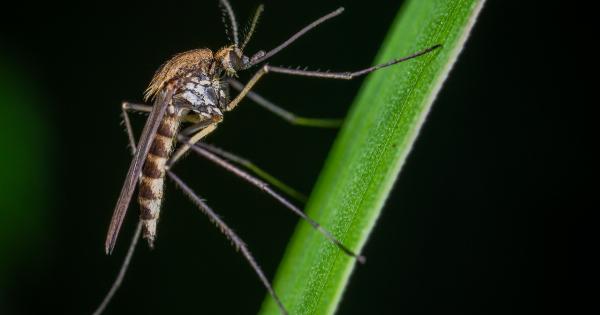The world has witnessed several outbreaks of deadly viruses that have claimed many lives. Ebola has been one of the most feared viruses for decades, and rightfully so, as it has a fatality rate of up to 90%.
However, there are several other viruses that are even more dangerous than Ebola. In this article, we will discuss the top scariest viruses that make Ebola look like a cold.
Lassa Fever
Lassa fever is a viral hemorrhagic fever caused by the Lassa virus. The virus is transmitted to humans by contact with food or household items contaminated with the urine or feces of infected rodents. It can also be spread through the air.
The symptoms of Lassa fever include fever, headache, nausea, vomiting, and bleeding from various parts of the body. The mortality rate of Lassa fever is about 1%, which is lower than Ebola, but the virus is more widespread and affects more people.
Marburg Virus Disease
Marburg virus disease is a severe and highly fatal disease that belongs to the same family as the Ebola virus. The virus is transmitted to humans through contact with fruit bats or primates that are infected with the virus.
The mortality rate of Marburg virus disease ranges from 23%-90%, depending on the outbreak. The symptoms of the disease include fever, headache, muscle aches, and bleeding from various parts of the body. There is no vaccine or specific treatment for Marburg virus disease.
Nipah Virus
Nipah virus is a zoonotic virus that is transmitted to humans from animals such as fruit bats, pigs, and horses. The virus is found in the urine and saliva of infected animals.
It can also be transmitted from human to human through close contact with infected people. The symptoms of the disease include fever, headache, coma, and acute respiratory syndrome. The mortality rate of Nipah virus disease is about 75%. The virus has caused several outbreaks in Asia, including India, Malaysia, and Bangladesh.
Hantavirus
Hantavirus is a group of viruses that are transmitted to humans through the urine, saliva, or droppings of infected rodents such as deer mice or field rats.
The virus can also be transmitted through the air when infected rodent droppings or urine are stirred up. The symptoms of hantavirus infection include fever, muscle aches, and respiratory distress. The mortality rate of hantavirus infection ranges from 36%-50%, depending on the type of virus.
Crimean-Congo Hemorrhagic Fever
Crimean-Congo hemorrhagic fever is a tick-borne disease that is caused by a virus from the Bunyaviridae family.
The virus is transmitted to humans by tick bites or by close contact with the blood or bodily fluids of infected humans or animals, such as goats. The symptoms of the disease include fever, headache, muscle aches, and bleeding from various parts of the body. The mortality rate of Crimean-Congo hemorrhagic fever ranges from 10%-40%.
SARS (Severe Acute Respiratory Syndrome)
SARS is a highly contagious viral respiratory disease that emerged in southern China in 2002 and spread to other countries.
The virus is transmitted from person to person through contact with respiratory secretions, such as coughing, sneezing, or talking. The symptoms of SARS include fever, cough, and severe respiratory distress. The mortality rate of SARS ranges from 9%-12%.
MERS (Middle East Respiratory Syndrome)
MERS is a viral respiratory disease that was first reported in Saudi Arabia in 2012. The virus is transmitted from camels to humans or from person to person through respiratory secretions, such as coughing or sneezing.
The symptoms of MERS include fever, cough, and severe respiratory distress. The mortality rate of MERS is about 35%.
Zika Virus
Zika virus is a mosquito-borne virus that was first identified in Uganda in 1947. The virus is transmitted by the Aedes mosquito, which is also responsible for transmitting dengue and chikungunya viruses.
The symptoms of Zika virus infection include fever, rash, and joint pain. However, the virus can also cause severe neurologic manifestations, such as Guillain-Barré syndrome. The virus can also cause birth defects such as microcephaly and other congenital malformations. There is no specific treatment or vaccine for Zika virus.
Yellow Fever
Yellow fever is a viral disease that is transmitted by infected mosquitoes. The virus is endemic in parts of Africa and South America. The symptoms of yellow fever include fever, headache, muscle aches, and jaundice.
The mortality rate of yellow fever ranges from 15%-50%, depending on the severity of the disease. There is a vaccine available for yellow fever prevention.
Dengue Fever
Dengue fever is a mosquito-borne viral disease that is endemic in tropical and subtropical regions of the world. The virus is transmitted by the Aedes mosquito, which also transmits the Zika and chikungunya viruses.
The symptoms of dengue fever include high fever, severe headache, joint and muscle pain, and rash. Severe dengue can cause bleeding, organ failure, and death. There is no specific treatment or vaccine for dengue fever.
Conclusion
There are several viruses that are more dangerous than Ebola, and they pose a significant threat to public health. We need to be aware of the risks and take precautions to prevent the spread of these viruses.
Governments need to take action to improve surveillance, develop vaccines and effective treatments, and establish infrastructure to respond to outbreaks quickly and effectively.































